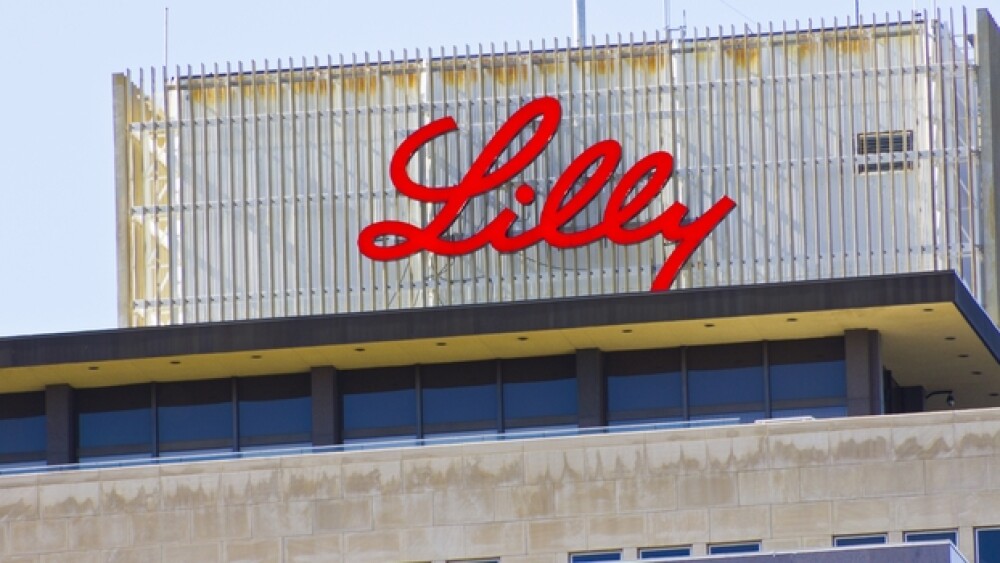Trulicity was approved by the U.S. Food and Drug Administration in September 2014.
Jonathan Weiss / Shutterstock
Eli Lilly and Company’s Trulicity (dulaglutide) is prescribed to treat high blood sugar in adults with type 2 diabetes. The drug is typically dosed once a week via the Trulicity Pen, an injection under the skin of the stomach, thigh, or upper arm.
Trulicity was approved by the U.S. Food and Drug Administration (FDA) in September 2014. It is indicated as an adjunct to diet and exercise to improve blood sugar control in adults diagnosed with type 2 diabetes. It is not appropriate for type 1 diabetes or diabetic ketoacidosis.
Drug Class
Trulicity is a glucagon-like peptide-1 (GLP-1) receptor agonist. It behaves like GLP-1, a natural hormone, helping the body release its own insulin.
GLP-1 agonists were originally discovered by John Eng while working in the laboratory of Rosalyn Yalow at the Mount Sinai School of Medicine. Eng’s research focused on peptide hormones. In the late 1980s he was advancing Yalow’s research by developing more sensitive tests to help identify hormones. He started with guinea pigs and then chinchillas. He was looking for more difficult test subjects when he came across research on snake venom and lizard venom, especially the venom of the Gila monster.
In 1992, Eng identified two compounds in Gila monster venom, one that he named exendin-4. It was similar to GLP-1 and was eventually licensed to Amylin Pharmaceuticals to develop into Exenatide, the first GLP-1 analog, which was approved in the U.S. in 2005.
GLP-1 agonists include Trulicity, AstraZeneca’s Byetta (exenatide), Novo Nordisk’s Victoza (liraglutide), Sanofi’s Adlyxin (lixisenatide) and Soliqua (glargine/lixisenatide) and many others.
Approval
The U.S. approval of Trulicity was based on the AWARD clinical trial program. AWARD-1 was a 52-week, randomized, placebo-controlled trial evaluating the effects of Trulicity 1.5 mg or 0.75 mg and AstraZeneca’s Byetta (exenatide) compared to placebo on glycemic control in adults with type 2 diabetes on maximally tolerated metformin and Actos (pioglitazone). Patients were excluded who had previous history of using GLP-1 agonists or chronic insulin therapy. The primary objective was to demonstrate superiority of once-daily Trulicity 1.5 mg versus placebo at 26 weeks, which it did. At the 26-week mark, mean A1C reductions with Trulicity at 1.5 mg was 1.5%, with 0.75 mg of Trulicity was 1.3%, 1.0% with Byetta, and 0.5% with placebo.
AWARD-2 was a 78-week, randomized, open-label study of Trulicity 1.5 mg or 0.75 mg and Lantus on glycemic control in adults with type 2 diabetes on maximally tolerated doses of metformin and glimepiride. As in AWARD-1, patients were excluded who had previous history of using GLP-1 agonists or chronic insulin therapy. The primary objective was the noninferiority of once-weekly Trulicity 1.5 mg compared to Sanofi’s Lantus (insulin glargine) titrated to target on A1C at 52 weeks. At the 52-week point, mean A1C reductions with 1.5 mg of Trulicity was 1.1%, with 0.75 mg Trulicity it was 0.8%, and with Lantus it was 0.6%.
There were AWARD-3, AWARD-4 and AWARD-5 studies making similar comparisons or in different combinations. AWARD-3 evaluated Trulicity to metformin; AWARD-4 compared Trulicity and Lantus, both in combination with insulin lispro, with or without metformin; AWARD-5 compared Trulicity to Merck & Co.’s Januvia (sitagliptin).
Sales History
Although Trulicity is Eli Lilly’s top-selling diabetes drug, in the third quarter of 2019 it missed Wall Street estimates. Demand for the drug was strong, but overall sales were impacted by lower prices due to higher rebates or discounts to pharmacy benefit managers (PBMs). Sales of the drug for the quarter were $1.01 billion, an increase of 24%, but missing analysts’ average estimate of $1.08 billion.
Still, a 2018 analysis by EvaluatePharma projected Trulicity to be the top-selling diabetes drug in the world by 2024, predicting annual sales of $4.6 billion and a market share of 7.8%.
Sales grew from $248.7 million in 2015 to $738 million in 2016 to $2 billion in 2017. Sales for 2018 were $3.199 billion.
Market
The GLP-1 agonist market is fierce. For 2019, the market was estimated at $7.7 billion and is projected to grow at a CAGR of 8.84% during 2019 to 2024. Part of the growth is related to increasing obesity rates and diabetes levels globally. In 2017, Novo Nordisk’s Victoza held a 55% market share, but Trulicity is expected to dominate moving forward.
North America is the largest part of the GLP-1 market globally, responsible for about 77% of sales and is expected to grow at a rate of 6.53%. The Middle East and Africa are expected to see the highest growth from 2019 to 2024, of a CAGR of 25.08%.
There are currently no generic versions of GLP-1 agonists on the market. In April 2019, Novo Nordisk settled with Teva Pharmaceutical, giving Novo Nordisk a four-year window before Teva releases a generic version of Victoza. Novo Nordisk’s patent expires in 2022 and in 2017, Teva filed an abbreviated New Drug Application (aNDA) with the FDA for a biosimilar version. Teva, per the settlement, can’t release a biosimilar to Victoza until March 2023 at the earliest and more likely not until December 22, 2023.
In June 2019, Lilly presented results from its REWIND clinical trial at the American Diabetes Association (ADA)’s 79th Scientific Sessions. It also simultaneously published the results in The Lancet.
REWIND showed that patients on Trulicity had a 12% reduction in major cardiovascular events (MACE) compared to patients receiving placebo. The study assessed the effectiveness of Trulicity 1.5 mg compared to patients receiving placebo in adults with type 2 diabetes. The focus was on cardiovascular (CV) events.
MACE, in this study, was a composite of non-fatal myocardial infarction (heart attack), non-fatal stroke, or CV death. The study showed a consistent reduction in MACE events in patients both with and without established cardiovascular disease and the risk was consistent through the duration of the trial. The trial is the longest CV outcomes trial, with a median of 5.4 years, in GLP-1 receptor agonist class of drugs. Most of the people in the trial did not have CV disease, although all had CV risk factors. Only 31% had established CV disease.
Vamil Divan, an analyst with Credite Suisse, wrote in a note to investors at the time that results “were fairly consistent across various patient subgroups and are clearly positive” for this class of drug, but “we believe investors may have been hoping for greater risk reduction.”
Novo Nordisk ran a similar study in 2016, although not as long, on Ozempic. In it, patients receiving Ozempic had reduced major cardiovascular events among patients with increased CV risk by 26%.
The news, if anything, underlined how competitive the diabetes market is, particularly in the U.S., where there is steady downward pressure on pricing and increased competition.
For example, Sanofi presented data at the ADA meeting on its Soliqua compared to GLP-1 agonists, showing that has had superior decrease of A1C levels after 26 weeks compared to several of the other standard treatments for type 2 diabetes, including Novo Nordisk’s Victoza, GlaxoSmithKline’s Tanzeum or Lilly’s Trulicity.
Nonetheless, the REWIND data suggested that Trulicity not only was effective in treating type 2 diabetics and their blood glucose levels, but also demonstrated a cardiovascular benefit in a broader population of type 2 diabetes patients, would might give it an edge in the market.





